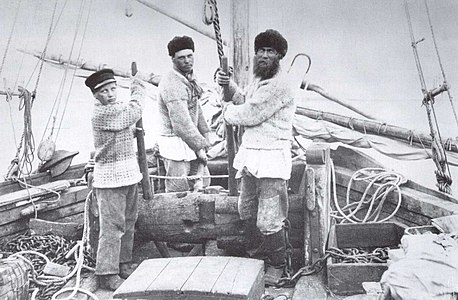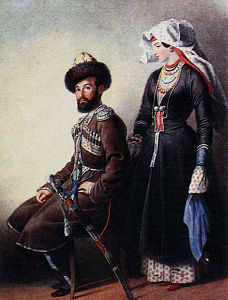Russians
Russian: Русские | |||||||||||||||||||||||||||||||||||||||||||||||||||||||||||||||
|---|---|---|---|---|---|---|---|---|---|---|---|---|---|---|---|---|---|---|---|---|---|---|---|---|---|---|---|---|---|---|---|---|---|---|---|---|---|---|---|---|---|---|---|---|---|---|---|---|---|---|---|---|---|---|---|---|---|---|---|---|---|---|---|
 | |||||||||||||||||||||||||||||||||||||||||||||||||||||||||||||||
| Total population | |||||||||||||||||||||||||||||||||||||||||||||||||||||||||||||||
| 134 million[1] | |||||||||||||||||||||||||||||||||||||||||||||||||||||||||||||||
| Regions with significant populations | |||||||||||||||||||||||||||||||||||||||||||||||||||||||||||||||
 | |||||||||||||||||||||||||||||||||||||||||||||||||||||||||||||||
| Diaspora | |||||||||||||||||||||||||||||||||||||||||||||||||||||||||||||||
| 7,170,000 (2018) including Crimea[3] | |||||||||||||||||||||||||||||||||||||||||||||||||||||||||||||||
| 3,512,925 (2020)[4] | |||||||||||||||||||||||||||||||||||||||||||||||||||||||||||||||
| 3,500,000 (including Russian Jews and Russian Germans) 1,213,000 (excluding ethnic German repatriates)[5][6] | |||||||||||||||||||||||||||||||||||||||||||||||||||||||||||||||
| 3,072,756 (2009) (including Russian Jews and Russian Germans)[7] | |||||||||||||||||||||||||||||||||||||||||||||||||||||||||||||||
| 938,500 (2011) (including Russian Jews)[8] | |||||||||||||||||||||||||||||||||||||||||||||||||||||||||||||||
| 809,530 (2019)[9] | |||||||||||||||||||||||||||||||||||||||||||||||||||||||||||||||
| 706,992 (2019)[10] | |||||||||||||||||||||||||||||||||||||||||||||||||||||||||||||||
| 622,445 (2016) (Russian ancestry, excluding Russian Germans)[11] | |||||||||||||||||||||||||||||||||||||||||||||||||||||||||||||||
| |||||||||||||||||||||||||||||||||||||||||||||||||||||||||||||||
| Languages | |||||||||||||||||||||||||||||||||||||||||||||||||||||||||||||||
| Russian | |||||||||||||||||||||||||||||||||||||||||||||||||||||||||||||||
| Religion | |||||||||||||||||||||||||||||||||||||||||||||||||||||||||||||||
| Predominantly Eastern Orthodoxy (Russian Orthodox Church) | |||||||||||||||||||||||||||||||||||||||||||||||||||||||||||||||
| Related ethnic groups | |||||||||||||||||||||||||||||||||||||||||||||||||||||||||||||||
| Linguistically and genetically other East Slavs (Belarusians, Ukrainians, Rusyns)[44] | |||||||||||||||||||||||||||||||||||||||||||||||||||||||||||||||
The Russians (Russian: русские, romanized: russkiye) are an East Slavic ethnic group native to Eastern Europe, who share a common Russian ancestry, culture, and history. Russian, the most spoken Slavic language, is the shared mother tongue of the Russians; and Orthodox Christianity is their historical religion since the 11th century. They are the largest Slavic nation, as well as the largest European nation.
The Russians were formed from East Slavic tribes, and their cultural ancestry is based in Kievan Rus'. Genetically, the majority of Russian populations are identical to the other East and West Slavs, only in the North Russian populations is it noted that they belong to the North European Baltic gene pool. The Russian word for the Russians is derived from the people of Rus' and the territory of Rus'. The Russians share many historical and cultural traits with other European peoples, and especially with other East Slavic ethnic groups, specifically Belarusians and Ukrainians.
Of the total 258 million speakers of Russian in the world,[45] roughly 134 million of them are ethnic Russians.[46] The vast majority of Russians live in native Russia, but notable minorities are scattered throughout other post-Soviet states such as Belarus, Kazakhstan, Moldova, Ukraine and the Baltic states. A large Russian diaspora (sometimes including Russian-speaking non-Russians), estimated at over 20–30 million people, has developed all over the world, with notable numbers in the United States, Germany, Brazil, and Canada.
Ethnonym
The standard way to refer to citizens of Russia is "Russians" in English.[47] There are two Russian words which are commonly translated into English as "Russians". One is "русские" (russkiye), which most often means "ethnic Russians". Another is "россияне" (rossiyane), which means "Russian citizens", regardless of ethnicity.[48]
The name of the Russians derives from the early medieval Rus' people, a group of Norse merchants and warriors who relocated from across the Baltic Sea and founded a state centred on Novgorod that later became Kievan Rus'.[49]
Until the Russian Revolution, Tsarist Russia never specifically called the people "Russians", referring to them instead as "Great Russians", a part of "Russians" (all the East Slavs).
History
Ancient history

The ancestors of modern Russians are the Slavic tribes, whose original home is thought by some scholars to have been the wooded areas of the Pinsk Marshes, one of the largest wetlands in Europe.[50] The East Slavs gradually settled Western Russia in two waves: one moving from Kiev toward present-day Suzdal and Murom and another from Polotsk toward Novgorod and Rostov.[51] From the 7th century onwards, the East Slavs constituted the bulk of the population in western Russia,[51] and, according to some scholars, slowly but peacefully assimilated the native Finnic peoples, including the Merya,[52] the Muromians,[53] and the Meshchera.[54]
Outside archaeological remains, little is known about the predecessors to Russians in general prior to 859 AD, when the Primary Chronicle starts its records.[55] By 600 AD, the Slavs are believed to have split linguistically into southern, western, and eastern branches.
Medieval history

The traditional start-date of specifically Russian history is the establishment of the Rus' state in the north in 862 ruled by Vikings.[56] Staraya Ladoga and Novgorod became the first major cities of the new union of immigrants from Scandinavia with the Slavs and Finns. In 882 Prince Oleg of Novgorod seized Kiev, thereby uniting the northern and southern lands of the Eastern Slavs under one authority. The state adopted Christianity from the Byzantine Empire in 988, beginning the synthesis of Byzantine and Slavic cultures that defined Orthodox Slavic culture for the next millennium. Kievan Rus' ultimately disintegrated as a state because of in-fighting between members of the princely family that ruled it collectively.
After the 13th century, Moscow became a political and cultural center. Moscow has become a center for the unification of Russian lands. By the end of the 15th century, Moscow united the northeastern and northwestern Russian principalities, in 1480 finally overthrew the Mongol yoke. The territories of the Grand Duchy of Moscow became the Tsardom of Russia in 1547.
Modern history
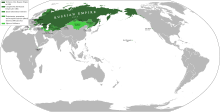
In 1721 Tsar Peter the Great renamed his state as the Russian Empire, hoping to associate it with historical and cultural achievements of ancient Rus' – in contrast to his policies oriented towards Western Europe. The state now extended from the eastern borders of the Polish–Lithuanian Commonwealth to the Pacific Ocean, and became a great power; and one of the most powerful states in Europe after the victory over Napoleon. Peasant revolts were common, and all were fiercely suppressed. The Emperor Alexander II abolished Russian serfdom in 1861, but the peasants fared poorly and revolutionary pressures grew. In the following decades, reform efforts such as the Stolypin reforms of 1906–1914, the constitution of 1906, and the State Duma (1906–1917) attempted to open and liberalize the economy and political system, but the Emperors refused to relinquish autocratic rule and resisted sharing their power.
A combination of economic breakdown, war-weariness, and discontent with the autocratic system of government triggered revolution in Russia in 1917. The overthrow of the monarchy initially brought into office a coalition of liberals and moderate socialists, but their failed policies led to seizure of power by the communist Bolsheviks on 25 October 1917 (7 November New Style). In 1922, Soviet Russia, along with Soviet Ukraine, Soviet Belarus, and the Transcaucasian SFSR signed the Treaty on the Creation of the USSR, officially merging all four republics to form the Soviet Union as a country. Between 1922 and 1991 the history of Russia became essentially the history of the Soviet Union, effectively an ideologically-based state roughly conterminous with the Russian Empire before the 1918 Treaty of Brest-Litovsk. From its first years, government in the Soviet Union-based itself on the one-party rule of the Communists, as the Bolsheviks called themselves, beginning in March 1918. The approach to the building of socialism, however, varied over different periods in Soviet history: from the mixed economy and diverse society and culture of the 1920s through the command economy and repressions of the Joseph Stalin era to the "era of stagnation" from the 1960s to the 1980s. During this period, Soviet Union won the World War II, becoming a superpower opposing Western countries in the Cold War. The USSR was successful in the space program, launching the first man into space.
By the mid-1980s, with the weaknesses of Soviet economic and political structures becoming acute, Mikhail Gorbachev embarked on major reforms, which eventually led to the overthrowal of the communist party and the breakup of the USSR, leaving Russia again on its own and marking the start of the history of post-Soviet Russia. The Russian Soviet Federative Socialist Republic renamed itself as the Russian Federation and became one of the several successors to the Soviet Union.
Geographic distribution
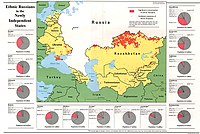
Ethnic Russians historically migrated throughout the area of former Russian Empire and Soviet Union, sometimes encouraged to re-settle in borderlands by the Tsarist and later Soviet government.[57] On some occasions, ethnic Russian communities, such as Lipovans who settled in the Danube delta or Doukhobors in Canada, emigrated as religious dissidents fleeing the central authority.
After the Russian Revolution and Russian Civil War starting in 1917, many Russians were forced to leave their homeland fleeing the Bolshevik regime, and millions became refugees. Many white émigrés were participants in the White movement, although the term is broadly applied to anyone who may have left the country due to the change in regime.
After the Dissolution of the Soviet Union an estimated 25 million Russians began living outside of the Russian Federation, most of them in the former Soviet Republics. In Ukraine (about 8 million), Kazakhstan (about 3.8 million), Belarus (about 785,000), Latvia (about 520,000) with the most Russian settlement out of the Baltic States which includes Lithuania and Estonia, Uzbekistan (about 650,000) and Kyrgyzstan (about 419,000). In Moldova, the Transnistria region (where 30.4% of the population is Russian) broke away from government control amid fears the country would soon reunite with Romania.
There are also small Russian communities in the Balkans, including Lipovans in the Danube delta,[58] Central European nations such as Germany and Poland, as well Russians settled in China, Japan, South Korea, Mexico, Brazil, Argentina and Australia. These communities may identify themselves either as Russians or citizens of these countries, or both, to varying degrees.


Significant numbers of Russians emigrated to Canada, Australia and the United States. Brighton Beach, Brooklyn and South Beach, Staten Island in New York City is an example of a large community of recent Russian and Russian Jewish immigrants. Other examples are Sunny Isles Beach, a northern suburb of Miami, and in West Hollywood of the Los Angeles area.
After the Russian Revolution in 1917, many Russians who were identified with the White army moved to China — most of them settling in Harbin and Shanghai.[59] By the 1930s, Harbin had 100,000 Russians. Many of these Russians had to move back to the Soviet Union after World War II. Today, a large group of people in northern China can still speak Russian as a second language. And Russians (eluosizu) are one of the 56 ethnic groups officially recognized by the People's Republic of China (as the Russ); there are approximately 15,600 Russian Chinese living mostly in northern Xinjiang, and also in Inner Mongolia and Heilongjiang.
Ethnographic groups
-
Lipovans in the Danube delta
-
Russia's Arctic coastline from the White Sea to the Bering Strait had been explored and settled by Pomors, Russian settlers from Novgorod
-
Terek Cossacks of the north Caucasus guarded the southern frontier
Among the Russians, a number of ethnographic groups stand out, such as: the Northern Russians, the Southern Russians, the Cossacks, the Goryuns, the Kamchadals, the Polekhs, the Pomors, the Russian Chinese, the Siberians (Siberiaks), Starozhily, some groupings of Old Believers (Kamenschiks, Lipovans, Semeiskie), and others.[60]
The main ones are the Northern and Southern Russian groups. At the same time, the proposal of the ethnographer Dmitry Zelenin in his major work of 1927 Russian (East Slavic) Ethnography to consider them as separate East Slavic peoples[61] did not find support in scientific circles.
Genetics

In accordance with the 2008 research results of Russian and Estonian geneticists, two groups of the Russians are distinguished: the northern and southern populations.[62][63]
The Central and Southern Russians, to which the majority of Russian populations belong, according to Y chromosome, are included in the general "East European" gene cluster with the rest East and West Slavs (Slovaks and Czechs), as well as the non-Slavic Hungarians and Aromanians.[64][62][65] Genetically, all Eastern Slavs are identical with Western Slavs; such genetic purity is somewhat unusual for genetics with such a wide settlement of the Slavs, especially the Russians.[66] The high unity of the autosomal markers of the East Slavic populations and their significant differences from the neighboring Finnic, Turkic and Caucasian peoples were revealed.[62][64]
The Northern Russians, according to mDNA, Y chromosome and autosomal marker CCR5de132, are included in the "North European" gene cluster (the Poles, the Balts, Germanic and Baltic Finnic peoples).[62][67]
Consequently, the already existing biologo-genetic studies have made all hypotheses about the mixing of the Russians with non-Slavic ethnic groups or their "non-Slavism" obsolete or pseudoscientific. At the same time, the long-standing identification of the Northern Russian and Southern Russian ethnographic groups by ethnologists was confirmed. The previous conclusions of physical anthropologists,[68] historians and linguists (see, in particular, the works of the academician Valentin Yanin) about the proximity of the ancient Novgorod Slavs and their language not to the East, but to west Baltic Slavs. As can be seen from genetic resources, the contemporary Northern Russians also are genetically close of all Slavic peoples only to the Poles and similar to the Balts. However, this does not mean the northern Russians origin from the Balts or the Poles, more likely, that all the peoples of the Nordic gene pool are descendants of Paleo-European population, which has remained around Baltic Sea.[62][67]
Language
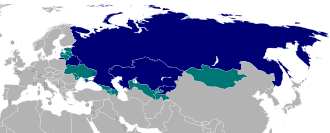
Russian is the official and the predominantly spoken language in Russia.[69] It is the most spoken native language in Europe,[70] the most geographically widespread language of Eurasia,[71] as well as the world's most widely spoken Slavic language.[71] Russian is the second-most used language on the Internet after English,[72] and is one of two official languages aboard the International Space Station,[73] as well as one of the six official languages of the United Nations.[74]
Culture
Literature
Russian literature is considered to be among the world's most influential and developed.[75] It can be traced to the Middle Ages, when epics and chronicles in Old East Slavic were composed.[76] By the Age of Enlightenment, literature had grown in importance, with works from Mikhail Lomonosov,[77] Denis Fonvizin,[78] Gavrila Derzhavin,[79] and Nikolay Karamzin.[80] From the early 1830s, during the Golden Age of Russian Poetry, literature underwent an astounding golden age in poetry, prose and drama. Romanticism permitted a flowering of poetic talent: Vasily Zhukovsky and later his protégé Alexander Pushkin came to the fore.[81][82] Following Pushkin's footsteps, a new generation of poets were born, including Mikhail Lermontov, Nikolay Nekrasov, Aleksey Konstantinovich Tolstoy, Fyodor Tyutchev and Afanasy Fet.[83]
The first great Russian novelist was Nikolai Gogol.[84] Then came Ivan Turgenev, who mastered both short stories and novels.[85] Fyodor Dostoevsky and Leo Tolstoy soon became internationally renowned.[86][87] Ivan Goncharov is remembered mainly for his novel Oblomov.[88] Mikhail Saltykov-Shchedrin wrote prose satire,[89] while Nikolai Leskov is best remembered for his shorter fiction.[90] In the second half of the century Anton Chekhov excelled in short stories and became a leading dramatist.[91] Other important 19th-century developments included the fabulist Ivan Krylov,[92] non-fiction writers such as the critic Vissarion Belinsky,[93] and playwrights such as Aleksandr Griboyedov and Aleksandr Ostrovsky.[94][95] The beginning of the 20th century ranks as the Silver Age of Russian Poetry. This era had poets such as Alexander Blok, Anna Akhmatova, Boris Pasternak, Konstantin Balmont,[96] Marina Tsvetaeva, Vladimir Mayakovsky, and Osip Mandelshtam.[83] It also produced some first-rate novelists and short-story writers, such as Aleksandr Kuprin, Nobel Prize winner Ivan Bunin, Leonid Andreyev, Yevgeny Zamyatin, Dmitry Merezhkovsky and Andrei Bely.[83]
After the Russian Revolution of 1917, Russian literature split into Soviet and white émigré parts. In the 1930s, Socialist realism became the predominant trend in Russia. Its leading figure was Maxim Gorky, who laid the foundations of this style.[97] Mikhail Bulgakov was one of the leading writers of the Soviet era.[98] Nikolay Ostrovsky's novel How the Steel Was Tempered has been among the most successful works of Russian literature. Various émigré writers, such as novelist Vladimir Nabokov continued to write in exile.[99] Some writers dared to oppose Soviet ideology, such as Nobel Prize-winning novelist Aleksandr Solzhenitsyn, who wrote about life in the gulag camps.[100]
| Pushkin (1799–1837) |
Lermontov (1814–1841) |
Turgenev (1818–1883) |
Dostoevsky (1821–1881) |
Tolstoy (1828–1910) |
Chekhov (1860–1904) |
Bulgakov (1891–1940) |
Akhmatova (1889–1966) |
|---|---|---|---|---|---|---|---|
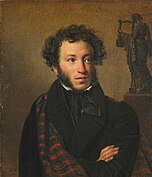
|

|

|

|

|

|

|
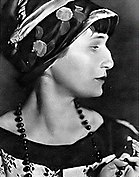
|
Philosophy
Russian philosophy has been greatly influential, with philosophers such as Alexander Herzen, who is called the "father of Russian socialism";[101] Mikhail Bakunin, who is referred to as the father of anarchism;[102] Mikhail Bakhtin,[103] Helena Blavatsky,[104] Vladimir Lenin, who is one of the world's most popular revolutionaries, and developed the political ideology of Leninism;[105] Leon Trotsky, who is the founder of Trotskyism;[106] and Petr Chaadaev, who influenced both the Westernizers and the Slavophiles.[107] Notable philosophers of the late 19th and 20th centuries including Vladimir Solovyov,[108] Alexander Zinoviev,[109] Sergei Bulgakov,[110] Pavel Florensky,[111] Lev Shestov,[112] and Nikolai Berdyaev.[113]
| Bakunin (1814–1876) |
Blavatsky (1831–1891) |
Kropotkin (1842–1921) |
Solovyov (1853–1900) |
Shestov (1866–1938) |
Berdyaev (1874–1948) |
Roerich (1874–1947) |
|---|---|---|---|---|---|---|
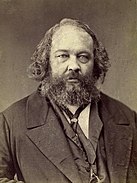
|
 |
 |
 |
 |

|

|
Science

At the start of the 18th century the reforms of Peter the Great (the founder of Russian Academy of Sciences and Saint Petersburg State University) and the work of such champions as polymath Mikhail Lomonosov (the founder of Moscow State University) gave a great boost for development of science, engineering and innovation in Russia. In the 19th and 20th centuries Russia produced a large number of great scientists and inventors.
Nikolai Lobachevsky, a Copernicus of Geometry, developed the non-Euclidean geometry. Dmitry Mendeleev invented the Periodic table, the main framework of the modern chemistry. Nikolay Benardos introduced the arc welding, further developed by Nikolay Slavyanov, Konstantin Khrenov and other Russian engineers. Gleb Kotelnikov invented the knapsack parachute, while Evgeniy Chertovsky introduced the pressure suit. Pavel Yablochkov and Alexander Lodygin were great pioneers of electrical engineering and inventors of early electric lamps.
Alexander Popov was among the inventors of radio, while Nikolai Basov and Alexander Prokhorov were co-inventors of lasers and masers. Igor Tamm, Andrei Sakharov and Lev Artsimovich developed the idea of tokamak for controlled nuclear fusion and created its first prototype, which finally led to the modern ITER project. Many famous Russian scientists and inventors were émigrés, like Igor Sikorsky and Vladimir Zworykin, and many foreign ones worked in Russia for a long time, like Leonard Euler and Alfred Nobel.
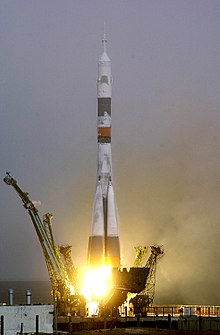
The greatest Russian successes are in the field of space technology and space exploration. Konstantin Tsiolkovsky was the father of theoretical astronautics.[114] His works had inspired leading Soviet rocket engineers such as Sergei Korolev, Valentin Glushko, and many others that contributed to the success of the Soviet space program at early stages of the Space Race and beyond.

Other technologies, where Russia historically leads, include nuclear technology, aircraft production and arms industry. The creation of the first nuclear power plant along with the first nuclear reactors for submarines and surface ships was directed by Igor Kurchatov. NS Lenin was the world's first nuclear-powered surface ship as well as the first nuclear-powered civilian vessel, and NS Arktika became the first surface ship to reach the North Pole. In 2019, Russia built the world's first floating nuclear power plant.[115]
A number of prominent Soviet aerospace engineers, inspired by the theoretical works of Nikolai Zhukovsky, supervised the creation of many dozens of models of military and civilian aircraft and founded a number of KBs (Construction Bureaus) that now constitute the bulk of Russian United Aircraft Corporation. Famous Russian airplanes include the first supersonic passenger jet Tupolev Tu-144 by Alexei Tupolev, MiG fighter aircraft series by Artem Mikoyan and Mikhail Gurevich, and Su series by Pavel Sukhoi and his followers. MiG-15 is the world's most produced jet aircraft in history, while MiG-21 is most produced supersonic aircraft. During World War II era Bereznyak-Isayev BI-1 was introduced as the first rocket-powered fighter aircraft, and Ilyushin Il-2 bomber became the most produced military aircraft in history. Polikarpov Po-2 Kukuruznik is the world's most produced biplane, and Mil Mi-8 is the most produced helicopter. Russia is also developing its own fifth-generation jet fighter (Sukhoi Su-57).[116]
Famous Russian battle tanks include T-34, the best tank design of World War II,[117] and further tanks of T-series, including T-54/55, the most produced tank in history,[118] first fully gas turbine tank T-80 and the most modern Russian tank T-90. The AK-47 and AK-74 by Mikhail Kalashnikov constitute the most widely used type of assault rifle throughout the world – so much so that more AK-type rifles have been produced than all other assault rifles combined.[119][120] With these and other weapons Russia for a long time has been among the world's top suppliers of arms.
| Lomonosov (1711–1765) |
Lobachevsky (1792–1856) |
Mendeleev (1837–1906) |
Yablochkov (1847–1894) |
Pavlov (1849–1936) |
Kovalevskaya (1850–1891) |
Korolyov (1907–1966) |
Sakharov (1921–1989) |
|---|---|---|---|---|---|---|---|

|

|

|

|
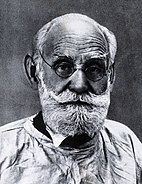
|

|

|

|
Space exploration
Roscosmos is Russia's national space agency;[122] while Russian achievements in the field of space technology and space exploration are traced back to Konstantin Tsiolkovsky, the father of theoretical astronautics.[123] His works had inspired leading Soviet rocket engineers, such as Sergey Korolyov, Valentin Glushko, and many others who contributed to the success of the Soviet space program in the early stages of the Space Race and beyond.
In 1957, the first Earth-orbiting artificial satellite, Sputnik 1, was launched.[124] In 1961, the first human trip into space was successfully made by Yuri Gagarin.[125] Many other Soviet and Russian space exploration records ensued, including the first spacewalk performed by Alexei Leonov.[126] Vostok 6 was the first human spaceflight to carry a woman into space (Valentina Tereshkova).[127] Luna 9 was the first spacecraft to land on the Moon,[128] Sputnik 2 was the first spacecraft to carry an animal (Laika),[129] Zond 5 brought the first Earthlings (two tortoises and other life forms) to circumnavigate the Moon,[130] Venera 7 was the first spacecraft to land on another planet (Venus),[131] and Mars 3 was the first spacecraft to land on Mars.[132] Lunokhod 1 was the first space exploration rover,[133] and Salyut 1 was the world's first space station.[134]
Russia is among the world's largest satellite launchers,[135] and has completed the GLONASS satellite navigation system. Luna-Glob is a Russian Moon exploration programme, with its first mission scheduled to launch in July 2022 (Luna 25).[136] To replace the ageing Soyuz, Roscosmos is also developing the Orel spacecraft, which could conduct its first crewed fight in 2025.[137] In April 2021, Roscosmos declared that it is planning to quit the ISS, and will create its own space station with the aim of launching it into orbit by 2030.[138] In June 2021, Roscosmos and China National Space Administration announced that they are jointly developing a lunar base, which is planned to be utilized from 2036.[139]
Music
Until the 18th-century, music in Russia consisted mainly of church music and folk songs and dances.[140] In the 19th-century, it was defined by the tension between classical composer Mikhail Glinka along with other members of The Mighty Handful, and the Russian Musical Society led by composers Anton and Nikolay Rubinstein.[140] The later tradition of Pyotr Ilyich Tchaikovsky, one of the greatest composers of the Romantic era, was continued into the 20th century by Sergei Rachmaninoff, one of the last great champions of the Romantic style of European classical music.[141] World-renowned composers of the 20th century include Alexander Scriabin, Alexander Glazunov, Igor Stravinsky, Sergei Prokofiev, Dmitri Shostakovich, Georgy Sviridov and Alfred Schnittke.[140]
Soviet and Russian conservatories have turned out generations of world-renowned soloists. Among the best known are violinists David Oistrakh and Gidon Kremer,[142][143] cellist Mstislav Rostropovich,[144] pianists Vladimir Horowitz,[145] Sviatoslav Richter,[146] and Emil Gilels,[147] and vocalist Galina Vishnevskaya.[148]
| Glinka (1804–1857) |
Mussorgsky (1839–1881) |
Tchaikovsky (1840–1893) |
Rimsky-Korsakov (1844–1908) |
Rachmaninoff (1873–1943) |
Stravinsky (1882–1971) |
Prokofiev (1891–1953) |
Shostakovich (1906–1975) |
|---|---|---|---|---|---|---|---|
 |
 |
 |
 |
 |
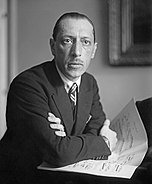
|
 |
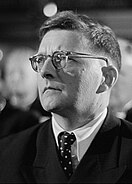
|
During the Soviet times, popular music also produced a number of renowned figures, such as the two balladeers—Vladimir Vysotsky and Bulat Okudzhava,[149] and performers such as Alla Pugacheva.[150] Jazz, even with sanctions from Soviet authorities, flourished and evolved into one of the country's most popular musical forms.[149] The Ganelin Trio have been described by critics as the greatest ensemble of free-jazz in continental Europe.[151] By the 1980s, rock music became popular across Russia, and produced bands such as Aria, Aquarium,[152] DDT,[153] and Kino.[154][155] Pop music in Russia has continued to flourish since the 1960s, with globally famous acts such as t.A.T.u..[156] In the recent times, Little Big, a rave band, has gained popularity in Russia and across Europe.[157]
Cinema

Russian and later Soviet cinema was a hotbed of invention, resulting in world-renowned films such as The Battleship Potemkin.[159] Soviet-era filmmakers, most notably Sergei Eisenstein and Andrei Tarkovsky, would go on to become among of the world's most innovative and influential directors.[160][161] Eisenstein was a student of Lev Kuleshov, who developed the groundbreaking Soviet montage theory of film editing at the world's first film school, the All-Union Institute of Cinematography.[162] Dziga Vertov's "Kino-Eye" theory had a huge impact on the development of documentary filmmaking and cinema realism.[163] Many Soviet socialist realism films were artistically successful, including Chapaev, The Cranes Are Flying, and Ballad of a Soldier.
The 1960s and 1970s saw a greater variety of artistic styles in Soviet cinema. The comedies of Eldar Ryazanov and Leonid Gaidai of that time were immensely popular, with many of the catchphrases still in use today.[164][165] In 1961–68 Sergey Bondarchuk directed an Oscar-winning film adaptation of Leo Tolstoy's epic War and Peace, which was the most expensive film made in the Soviet Union.[166] In 1969, Vladimir Motyl's White Sun of the Desert was released, a very popular film in a genre of ostern; the film is traditionally watched by cosmonauts before any trip into space.[167] In 2002, Russian Ark was the first feature film ever to be shot in a single take.[168] Today, the Russian cinema industry continues to expand.[169]
Architecture

The history of Russian architecture begins with early woodcraft buildings of ancient Slavs,[170] and the architecture of Kievan Rus'.[171] Following the Christianization of Kievan Rus', for several centuries it was influenced predominantly by the Byzantine Empire.[172] Aristotle Fioravanti and other Italian architects brought Renaissance trends into Russia.[173] The 16th-century saw the development of the unique tent-like churches; and the onion dome design, which is a distinctive feature of Russian architecture.[174] In the 17th-century, the "fiery style" of ornamentation flourished in Moscow and Yaroslavl, gradually paving the way for the Naryshkin baroque of the 1690s. After the reforms of Peter the Great, Russia's architecture became influenced by Western European styles.[175] The 18th-century taste for Rococo architecture led to the splendid works of Bartolomeo Rastrelli and his followers.[176] During the reign of Catherine the Great, Saint Petersburg was transformed into an outdoor museum of Neoclassical architecture.[177] During Alexander I's rule, Empire style became the de facto architectural style, and Nicholas I opened the gate of Eclecticism to Russia. The second half of the 19th-century was dominated by the Neo-Byzantine and Russian Revival style. In early 20th-century, Russian neoclassical revival became a trend.[175] Prevalent styles of the late 20th-century were the Art Nouveau, Constructivism,[178] and Socialist Classicism.[179]
Religion

Russia's largest religion is Christianity—It has the world's largest Orthodox population.[180][181] As of a different sociological surveys on religious adherence; between 41% to over 80% of the total population of Russia adhere to the Russian Orthodox Church.[182][183][184]
Non-religious Russians may associate themselves with the Orthodox faith for cultural reasons. Some Russian people are Old Believers: a relatively small schismatic group of the Russian Orthodoxy that rejected the liturgical reforms introduced in the 17th century. Other schisms from Orthodoxy include Doukhobors which in the 18th century rejected secular government, the Russian Orthodox priests, icons, all church ritual, the Bible as the supreme source of divine revelation and the divinity of Jesus, and later emigrated into Canada. An even earlier sect were Molokans which formed in 1550 and rejected Czar's divine right to rule, icons, the Trinity as outlined by the Nicene Creed, Orthodox fasts, military service, and practices including water baptism.
Other world religions have negligible representation among ethnic Russians. The largest of these groups are Islam with over 100,000 followers from national minorities,[185] and Baptists with over 85,000 Russian adherents.[186] Others are mostly Pentecostals, Evangelicals, Seventh-day Adventists, Lutherans and Jehovah's Witnesses.
Since the fall of the Soviet Union various new religious movements have sprung up and gathered a following among ethnic Russians. The most prominent of these are Rodnovery, the revival of the Slavic native religion also common to other Slavic nations,[187] Another movement, very small in comparison to other new religions, is Vissarionism, a syncretic group with an Orthodox Christian background.
Sports
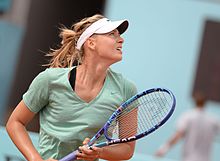
Football is the most popular sport in Russia.[189] The Soviet Union national football team became the first European champions by winning Euro 1960,[190] and reached the finals of Euro 1988.[191] In 1956 and 1988, the Soviet Union won gold at the Olympic football tournament. Russian clubs CSKA Moscow and Zenit Saint Petersburg won the UEFA Cup in 2005 and 2008.[192][193] The Russian national football team reached the semi-finals of Euro 2008.[194] Russia was the host nation for the 2017 FIFA Confederations Cup,[195] and the 2018 FIFA World Cup.[196]
Ice hockey is very popular in Russia.[197] The Soviet Union men's national ice hockey team dominated the sport internationally throughout its existence,[198] and the modern-day Russia men's national ice hockey team is among the most successful teams in the sport.[197] Bandy is Russia's national sport, and it has historically been the highest-achieving country in the sport.[199] The Russian national basketball team won the EuroBasket 2007,[200] and the Russian basketball club PBC CSKA Moscow is among the most successful European basketball teams. The annual Formula One Russian Grand Prix is held at the Sochi Autodrom in the Sochi Olympic Park.[201]
Historically, Russian athletes have been one of the most successful contenders in the Olympic Games,[202] ranking second in an all-time Olympic Games medal count.[203] Russia is the leading nation in rhythmic gymnastics; and Russian synchronized swimming is considered to be the world's best.[204] Figure skating is another popular sport in Russia, especially pair skating and ice dancing.[205] Russia has produced a number of famous tennis players.[206] Chess is also a widely popular pastime in the nation, with many of the world's top chess players being Russian for decades.[207] The 1980 Summer Olympic Games were held in Moscow,[208] and the 2014 Winter Olympics and the 2014 Winter Paralympics were hosted in Sochi.[209][210]
See also
Notelist
References
Citations
- ^ "Russian". Joshua Project. Retrieved 10 August 2020.
- ^ Project, Joshua. "Russian in Russia". Joshua Project. Retrieved 11 August 2020.
- ^ http://www.ukrstat.gov.ua/
- ^ "The population of the Republic of Kazakhstan by ethnic groups". data.egov.kz. Committee on Statistics of Ministry of National Economy of the Republic of Kazakhstan. 29 May 2020. Retrieved 17 June 2021.
- ^ "Migration und Integration" (PDF). Archived from the original (PDF) on 19 January 2019. Retrieved 19 January 2019.
- ^ "Regarding Upcoming Conference on Status of Russian Language Abroad". Russian Ministry of Foreign Affairs. Archived from the original on 23 December 2015. Retrieved 24 June 2014.
- ^ "American FactFinder – Results". Data Access and Dissemination Systems (DADS). Archived from the original on 12 February 2020. Retrieved 19 September 2016.
- ^ http://jppi.org.il/uploads/Jewish_Demographic_Policies.pdf
- ^ "Archived copy". Archived from the original on 14 November 2018. Retrieved 18 January 2019.
{{cite web}}: CS1 maint: archived copy as title (link) - ^ https://www.belstat.gov.by/upload/iblock/df5/df5842f32b1b8a711043f8f54856f5c8.pdf
- ^ "Census Profile, 2016 Census". statcan.gc.ca.
- ^ "Meklēt | Oficiālās statistikas portāls".
- ^ "Archived copy". Archived from the original on 27 December 2018. Retrieved 18 January 2019.
{{cite web}}: CS1 maint: archived copy as title (link) - ^ Maria Stella Ferreira Levy. O papel da migração internacional na evolução da população brasileira (1872 to 1972). inRevista de Saúde Pública, volume supl, June 1974.
- ^ "Archived copy". Archived from the original on 11 June 2019. Retrieved 1 February 2020.
{{cite web}}: CS1 maint: archived copy as title (link) - ^ "Los rusos en Argentina constituyen la mayor comunidad de Latinoamérica – Edición Impresa – Información General".
- ^ "Moldovan Population Census from 2014". Moldovan National Bureau of Statistics.
- ^ a b "La communauté russe en France est "éclectique"".
- ^ "communauté russe en France" (PDF). Archived from the original (PDF) on 12 April 2019. Retrieved 19 January 2019.
- ^ "Archived copy". Archived from the original on 19 January 2019. Retrieved 19 January 2019.
{{cite web}}: CS1 maint: archived copy as title (link) - ^ "Gyventojų pagal tautybę dalis, palyginti su bendru nuolatinių gyventojų skaičiumi". osp.stat.gov.lt. Retrieved 13 August 2017.
- ^ "2006 census".
- ^ "The State Statistical Committee of the Republic of Azerbaijan". azstat.org. Archived from the original on 7 January 2012.
- ^ "Befolkning 31.12. Efter Område, Bakgrundsland, Kön, År och Uppgifter".
- ^ "Australian Bureau of Statistics". Abs.gov.au. Retrieved 22 July 2012.
- ^ "МИД России | 12/02/2009 | Интервью Посла России в Турции В.Е.Ивановского, опубликованное в журнале "Консул" № 4 /19/, декабрь 2009 года". Mid.ru. Archived from the original on 2 January 2016. Retrieved 22 July 2012.
- ^ "Immigrant and Emigrant Populations by Country of Origin and Destination". Migration Policy Institute. 10 February 2014. Retrieved 20 September 2020.
- ^ Informatii utile | Agentia Nationala pentru Intreprinderi Mici si Mijlocii (2002 census) (in Romanian)
- ^ "(number of foreigners in the Czech Republic)" (PDF) (in Czech). 31 December 2016. Retrieved 6 October 2017.
- ^ "Доля титульной национальности возрастает во всех странах СНГ, кроме России".
- ^ "출입국·외국인정책 통계월보". 출입국·외국인정책 본부 이민정보과.
- ^ The source is not Russian but Russian Koreans.
- ^ http://census.ge/files/results/english/17_Total%20population%20by%20regions%20and%20ethnicity.xls
- ^ Vukovich, Gabriella (2018). Mikrocenzus 2016 – 12. Nemzetiségi adatok [2016 microcensus – 12. Ethnic data] (PDF) (in Hungarian). Budapest. ISBN 978-963-235-542-9. Retrieved 9 January 2019.
{{cite book}}:|work=ignored (help)CS1 maint: location missing publisher (link) - ^ "Utrikes födda efter födelseland, kön och år". www.scb.se. Statistiska Centralbyrån. Retrieved 25 May 2017.[permanent dead link]
- ^ "(2000 census)". Stats.gov.cn. Archived from the original on 26 August 2018. Retrieved 22 July 2012.
- ^ "(2002 census)". Nsi.bg. Retrieved 22 July 2012.
- ^ "(2002 census)" (PDF). Retrieved 22 July 2012.
- ^ "rcnk.gr". April 2020.[dead link]
- ^ "Центральная избирательная комиссия Российской Федерации". www.foreign-countries.vybory.izbirkom.ru. Retrieved 17 June 2021.
- ^ "Statistics Denmark 2019 K4: Russian". Statistics Denmark.
- ^ "Census ethnic group profiles: Russian". Stats NZ. 2013.
- ^ "POPULATION CENSUS 2001 VOL4". 2004.
- ^ Balanovsky, Oleg; Rootsi, Siiri; Pshenichnov, Andrey; Kivisild, Toomas; Churnosov, Michail; Evseeva, Irina; Pocheshkhova, Elvira; Boldyreva, Margarita; Yankovsky, Nikolay; Balanovska, Elena; Villems, Richard (January 2008). "Two sources of the Russian patrilineal heritage in their Eurasian context". American Journal of Human Genetics. 82 (1): 236–50. doi:10.1016/j.ajhg.2007.09.019. PMC 2253976. PMID 18179905.
- ^ "Russian". Ethnologue. Retrieved 10 August 2020.
- ^ "Russian". Joshua Project. Retrieved 10 August 2020.
- ^ "Definition of Russian". Merriam-Webster. Retrieved 21 September 2016.
- ^ "РУССКИЕ И РОССИЯНЕ". pravoslavie.ru. Retrieved 12 January 2020.
- ^ Duczko, Wladyslaw (2004). Viking Rus. Brill Publishers. pp. 10–11. ISBN 978-90-04-13874-2. Retrieved 29 June 2021.
- ^ For a discussion of the origins of Slavs, see Barford, P. M. (2001). The Early Slavs. Cornell University Press. pp. 15–16. ISBN 978-0-8014-3977-3.
- ^ a b Christian, D. (1998). A History of Russia, Central Asia and Mongolia. Blackwell Publishing. pp. 286–288. ISBN 978-0-631-20814-3.
- ^ Paszkiewicz, H.K. (1963). The Making of the Russian Nation. Darton, Longman & Todd. p. 262.
- ^ McKitterick, R. (15 June 1995). The New Cambridge Medieval History. Cambridge University Press. p. 497. ISBN 0521364477.
- ^ Mongaĭt, A.L. (1959). Archeology in the U.S.S.R. Foreign Languages Publishing House. p. 335.
- ^ The Primary Chronicle is a history of the Ancient Rus' from around 850 to 1110, originally compiled in Kiev about 1113.
- ^ "Повесть временных лет".
- ^ Russians left behind in Central Asia. BBC News. 23 November 2005.
- ^ "Saving the souls of Russia's exiled Lipovans". The Daily Telegraph. 9 April 2013.
- ^ "The Ghosts of Russia That Haunt Shanghai". The New York Times. 21 September 1999.
- ^ Alexandrov, Vlasova & Polishchuk 1997, pp. 107–123.
- ^ Zelenin 1991, §§ 1–4.
- ^ a b c d e Balanovsky & Rootsi 2008, pp. 236–50.
- ^ Balanovsky 2012, p. 24.
- ^ a b Malyarchuk & Derenko 2004, pp. 877–900.
- ^ Balanovsky 2012, p. 23.
- ^ Balanovsky 2012, p. 13.
- ^ a b Balanovsky 2012, p. 26.
- ^ Sankina 2000, p. 98.
- ^ "Chapter 3. The Federal Structure". Constitution of Russia. Retrieved 22 April 2015.
1. The Russian language shall be a state language on the whole territory of the Russian Federation.
- ^ "The 10 Most Spoken Languages in Europe". Tandem. 12 September 2019. Retrieved 31 May 2021.
- ^ a b "Russian". University of Toronto. Retrieved 9 July 2021.
Russian is the most widespread of the Slavic languages and the largest native language in Europe. Of great political importance, it is one of the official languages of the United Nations – making it a natural area of study for those interested in geopolitics.
- ^ "Usage statistics of content languages for websites". W3Techs. Retrieved 17 July 2021.
- ^ Wakata, Koichi. "My Long Mission in Space". JAXA. Retrieved 18 July 2021.
The official languages on the ISS are English and Russian, and when I was speaking with the Flight Control Room at JAXA's Tsukuba Space Center during ISS systems and payload operations, I was required to speak in either English or Russian.
- ^ "Official Languages". United Nations. Retrieved 16 July 2021.
There are six official languages of the UN. These are Arabic, Chinese, English, French, Russian and Spanish. The correct interpretation and translation of these six languages, in both spoken and written form, is very important to the work of the Organization, because this enables clear and concise communication on issues of global importance.
- ^ Prose, Francine; Moser, Benjamin (25 November 2014). "What Makes the Russian Literature of the 19th Century So Distinctive?". The New York Times. Retrieved 19 July 2021.
- ^ Letopisi: Literature of Old Rus'. Biographical and Bibliographical Dictionary. ed. by Oleg Tvorogov. Moscow: Prosvescheniye ("Enlightenment"), 1996. (Russian: Летописи // Литература Древней Руси. Биобиблиографический словарь / под ред. О.В. Творогова. – М.: Просвещение, 1996.)
- ^ Smith, M. N. (1968). "Old Russian Literature: Michael Vasilievich Lomonosov (1711-1765)". The South Central Bulletin. 28 (4). JSTOR: 126–128. doi:10.2307/3188300. JSTOR 3188300.
- ^ Offord, Derek (2005). "Denis Fonvizin and the Concept of Nobility: An Eighteenth-century Russian Echo of a Western Debate". European History Quarterly. 35 (1): 10. doi:10.1177/0265691405049200. S2CID 145305528.
- ^ Khodasevich, Vladislav (2007). Derzhavin: A Biography. University of Wisconsin Press. p. 344. ISBN 978-0299224202.
- ^ Cross, Anthony (1971). N. M. Karamzin: a study of his literary career, 1783-1803. Southern Illinois University Press. p. 344. ISBN 978-0809304523.
- ^ Vinitsky, Ilya (2015). Vasily Zhukovsky's Romanticism and the Emotional History of Russia. Northwestern University Press. p. 400. ISBN 978-0810131859.
- ^ Binyon, T.J. (2004). Pushkin: A Biography. Vintage Books. p. 784. ISBN 9781400076529.
- ^ a b c Glenn E. Curtis, ed. (1998). "Russia - Literature". Washington D.C.: Federal Research Division of the Library of Congress. Retrieved 27 July 2021.
- ^ Peace, Richard (1981). The Enigma of Gogol: An Examination of the Writings of N. V. Gogol and Their Place in the Russian Literary Tradition. p. 356. ISBN 978-0521110235.
- ^ Schapiro, Leonard (1982). Turgenev, His Life and Times. Harvard University Press. p. 416. ISBN 9780674912977.
- ^ McLean, Hugh (2008). "A Clash of Utopias". A Clash of Utopias:: Tolstoy and Gorky. Academic Studies Press. pp. 181–194. ISBN 978-1-934843-02-4. JSTOR j.ctt1zxsjx2.15. Retrieved 1 July 2021.
{{cite book}}:|work=ignored (help) - ^ Scanlan, James Patrick (2002). Dostoevsky the Thinker: A Philosophical Study. Cornell University Press. ISBN 978-0-8014-3994-0.
- ^ Pritchett, V.S. (7 March 1974). "Saint of Inertia". The New York Review of Books. Retrieved 29 July 2021.
- ^ Neuhäuser, Rudolf (1980). "The Early Prose of Saltykov-Shchedrin and Dostoevskii: Parallels and Echoes". Canadian Slavonic Papers. 22 (3): 372–387. doi:10.1080/00085006.1980.11091635. JSTOR 40867755.
- ^ McLean, Hugh (1977). Nikolai Leskov: The Man and His Art. Harvard University Press. p. 796. ISBN 978-0674624719.
- ^ Rayfield, Donald (2000). Anton Chekhov: A Life. Northwestern University Press. p. 674. ISBN 978-0810117952.
- ^ Pirie, Gordon; Chandler, Robert (2009). "Eight Tales from Ivan Krylov". Translation and Literature. 18 (1). Edinburgh University Press: 64–85. doi:10.3366/E096813610800037X. JSTOR 40340118.
- ^ Gifford, Henry (1948). "Belinsky: One Aspect". The Slavonic and East European Review. 27 (68): 250–258. JSTOR 4204011.
- ^ Brintlinger, Angela (2003). "The Persian Frontier: Griboedov as Orientalist and Literary Hero". Canadian Slavonic Papers. 45 (3/4): 371–393. doi:10.1080/00085006.2003.11092333. JSTOR 40870888. S2CID 191370504.
- ^ Beasly, Ina (1928). "The Dramatic Art of Ostrovsky. (Alexander Nikolayevich Ostrovsky, 1823-86)". The Slavonic and East European Review. 6 (18): 603–617. JSTOR 4202212.
- ^ Markov, Vladimir (1969). "Balmont: A Reappraisal". Slavic Review. 28 (2): 221–264. doi:10.2307/2493225. JSTOR 2493225.
- ^ Yedlin, Tovah (1999). Maxim Gorky: A Political Biography. p. 280. ISBN 978-0275966058.
- ^ Milne, Lesley (2009). Mikhail Bulgakov: A Critical Biography. Cambridge University Press. p. 340. ISBN 978-0521122467.
- ^ Boyd Brian (1993). Vladimir Nabokov: The Russian Years. Princeton University Press. p. 619. ISBN 978-0691024707.
- ^ Klimoff, Alexis; Ericson, Edward E. (2008). The Soul and Barbed Wire: An Introduction to Solzhenitsyn. p. 289. ISBN 978-1933859576.
- ^ Acton, Edward (1979). Alexander Herzen and the Role of the Intellectual Revolutionary. Cambridge University Press. p. 208. ISBN 978-0521109642.
- ^ Masters, Anthony (1974). Bakunin, the Father of Anarchism. Saturday Review Press. ISBN 0-8415-0295-1.
- ^ Hirschkop, Ken (1989). Bakhtin and Cultural Theory. Manchester University Press. p. 288. ISBN 978-0719049903.
- ^ Meade, Marion (1980). Madame Blavatsky: The Woman Behind the Myth. New York City. p. 372. ISBN 9780399123764.
{{cite book}}: CS1 maint: location missing publisher (link) - ^ Pannekoek, Anton; Richey, Lance Byron (1938). Lenin as Philosopher. p. 177. ISBN 9780874626544.
- ^ Beilharz, Peter (1987). Trotsky, Trotskyism and the Transition to Socialism. p. 208. ISBN 978-0389206989.
- ^ Glazov, Yuri (1986). "Chaadaev and Russia's Destiny". Studies in Soviet Thought. 32 (4). Springer: 281–301. doi:10.1007/BF00831732. JSTOR 20100185. S2CID 141097272.
- ^ Sutton, Jonathan (1988). The Religious Philosophy of Vladimir Solovyov: Towards a Reassessment. Palgrave Macmillan. p. 247. ISBN 978-0312012397.
- ^ Kirkwood, Michael; Hanson, Philip (1988). Alexander Zinoviev As Writer and Thinker: An Assessment. Palgrave Macmillan. p. 207. ISBN 978-0312015428.
- ^ Slesinki, Robert (2017). The Theology of Sergius Bulgakov. p. 280. ISBN 978-0881416015.
- ^ Pyman, Avril (2010). Pavel Florensky: A Quiet Genius: The Tragic and Extraordinary Life of Russia's Unknown da Vinci. p. 328. ISBN 978-1441187000.
- ^ Shein, Louis J. (1967). "Lev Shestov: A Russian Existentialist". The Russian Review. 26 (3): 278–285. doi:10.2307/127090. JSTOR 127090.
- ^ Lowrie, Donald A. (1960). Rebellious Prophet: A Life Of Nicolai Berdyaev. Harper. p. 310. ISBN 978-0837170954.
- ^ "American Institute of Aeronautics and Astronautics – Home Page". Aiaa.org. Archived from the original on 4 January 2012. Retrieved 2 January 2010.
- ^ "Russia floating nuclear power station sets sail across Arctic". BBC. 23 August 2019. Retrieved 28 June 2021.
- ^ Ryan Bauer and Peter A. Wilson (17 August 2020). "Russia's Su-57 Heavy Fighter Bomber: Is It Really a Fifth-Generation Aircraft?". RAND Corporation. Retrieved 28 June 2021.
- ^ George Parada (n.d.), "Panzerkampfwagen T-34(r)" at Achtung Panzer! website, retrieved on 17 November 2008.
- ^ Halberstadt, Hans Inside the Great Tanks The Crowood Press Ltd. Wiltshire, England 1997 94–96 ISBN 1-86126-270-1
"The T-54/T-55 series is the hands down, all-time most popular tank in history." - ^ Poyer, Joe. The AK-47 and AK-74 Kalashnikov Rifles and Their Variations. North Cape Publications. 2004.
- ^ "Weaponomics: The Economics of Small Arms" (PDF).
- ^ "Mir Space Station". NASA. Retrieved 1 June 2021.
- ^ Gary Kitmacher (2006). Reference Guide to the International Space Station. Canada: Apogee Books. pp. 71–80. ISBN 978-1-894959-34-6. ISSN 1496-6921.
{{cite book}}:|work=ignored (help) - ^ "Konstantin E. Tsiolkovsky". NASA. 5 June 2013. Retrieved 28 June 2021.
- ^ Brzezinski, Matthew B. (2007). Red Moon Rising: Sputnik and the Hidden Rivalries That Ignited the Space Age. New York City: Henry Holt and Company. ISBN 978-0-8050-8147-3.
- ^ Jenks, Andrew L. (2012). The Cosmonaut Who Couldn't Stop Smiling: The Life and Legend of Yuri Gagarin. Northern Illinois University Press. ISBN 978-0875804477.
- ^ Rincon, Paul (13 October 2014). "The First Spacewalk". BBC. Retrieved 31 May 2021.
- ^ "Who was the first woman in space?". Royal Museums Greenwich. Retrieved 8 June 2021.
- ^ "Luna 9". NASA. Retrieved 1 June 2021.
- ^ "What was the first animal sent into space?". Royal Museums Greenwich. Retrieved 1 June 2021.
- ^ "Zond 5". NASA. Retrieved 1 June 2021.
- ^ "Venera 7". NASA. Retrieved 1 June 2021.
- ^ Heil, Andy (31 July 2020). "The Soviet Mars Shot That Almost Everyone Forgot". Radio Free Europe. Retrieved 1 June 2021.
- ^ "Lunokhod 01". NASA. Retrieved 1 June 2021.
- ^ "50 Years Ago: Launch of Salyut, the World's First Space Station". NASA. 19 April 2021. Retrieved 1 June 2021.
- ^ "Russia launches 38 satellites for 18 countries". The Hindu. 23 March 2021. Retrieved 28 June 2021.
- ^ "Russia to launch Luna-25 automatic station in July 2022 — Roscosmos". TASS. Retrieved 12 October 2021.
- ^ "Russia to create Angara-A5P rocket for manned space launches by 2024". TASS. 6 November 2019. Retrieved 30 June 2021.
- ^ "Russia plans to launch own space station after quitting ISS". Reuters. 21 April 2021. Retrieved 28 June 2021.
- ^ Clark, Stuark (25 June 2021). "Russia and China team up to build a moon base". The Guardian. Retrieved 28 June 2021.
- ^ a b c Excerpted from Glenn E. Curtis (ed.) (1998). "Russia – Music". Washington, D.C.: Federal Research Division of the Library of Congress. Retrieved 25 June 2021.
{{cite web}}:|last=has generic name (help) - ^ Norris, Gregory (1980). Stanley, Sadie (ed.). The New Grove Dictionary of Music and Musicians, 2nd edition. London: Macmillan. p. 707. ISBN 978-0-333-23111-1.
- ^ Roth, Henry (1997). Violin Virtuosos: From Paganini to the 21st Century. ISBN 1-879395-15-0.
- ^ Higgins, Charlotte (22 November 2000). "Perfect isn't good enough". The Guardian. Retrieved 7 July 2021.
Thirty years ago Gidon Kremer was rated as one of the world's outstanding violinists. Then he really started making waves...
- ^ Wilson, Elizabeth (2007). Mstislav Rostropovich: Cellist, Teacher, Legend. London: Faber & Faber. ISBN 978-0-571-22051-9.
- ^ Dubal, David (1993). Remembering Horowitz: 125 Pianists Recall a Legend. Schirmer Books. ISBN 0-02-870676-5.
- ^ Hunt, John (2009). Sviatoslav Richter: Pianist of the Century: Discography. London: Travis & Emery. ISBN 978-1-901395-99-0.
- ^ Carrick, Phil (21 September 2013). "Emil Gilels: A True Giant of the Keyboard". ABC Classic. Archived from the original on 26 January 2015. Retrieved 7 July 2021.
- ^ Spreng, Sebastian (19 December 2012). "Galina Vishnevskaya, the Russian tigress". Knight Foundation. Retrieved 7 July 2021.
- ^ a b "Russia – Music". Encyclopedia Britannica. Retrieved 7 July 2021.
- ^ Smale, Alison (28 February 2000). "A Superstar Evokes a Superpower; In Diva's Voice, Adoring Fans Hear Echoes of Soviet Days". The New York Times. Retrieved 7 July 2021.
- ^ Scaruffi, Piero. "Ganelin Trio". Retrieved 7 July 2021.
The Ganelin Trio was the greatest ensemble of free-jazz in continental Europe, namely in Russia. Like other European improvisers, pianist Vyacheslav Ganelin, woodwind player Vladimir Chekasin and percussionist Vladimir Tarasov too found a common ground between free-jazz and Dadaism. Their shows were as much music as they were provocative antics.
- ^ McGrane, Sally (21 October 2014). "Boris Grebenshikov: 'The Bob Dylan of Russia'". BBC. Retrieved 7 July 2021.
- ^ Pellegrinelli, Lara (6 February 2008). "DDT: Notes from Russia's Rock Underground". National Public Radio. Retrieved 10 July 2021.
For the Russian band DDT, it was hard enough being a rock group under the Soviet regime. The band, which formed in 1981, gave secret concerts in apartments, bomb shelters, and even kindergarten classrooms to avoid the attention of authorities... Later, the policies of perestroika allowed bands to perform out in the open. DDT went on to become one of Russia's most popular acts...
- ^ O'Connor, Coilin (23 March 2021). "'Crazy Pirates': The Leningrad Rockers Who Rode A Wind Of Change Across The U.S.S.R." Radio Free Europe/Radio Liberty. Retrieved 7 July 2021.
- ^ "Musician, Songwriter, Cultural Force: Remembering Russia's Viktor Tsoi". Radio Free Europe/Radio Liberty. 12 August 2015. Retrieved 19 July 2021.
Also in 1982, Tsoi formed the band Kino and the group recorded its first album, 45... Tsoi and Kino quickly became a sensation... In 1986, the band released Khochu peremen – an anthem calling on the young generation to become more active and demand political change. The song made Kino's reputation across the Soviet Union...
- ^ "Tatu bad to be true". The Age. 14 June 2003. Retrieved 7 July 2021.
- ^ Faramarzi, Sabrina (12 May 2019). "Little Big: camp, outrageous Russian rave". Medium. Retrieved 7 July 2021.
- ^ Hodgson, Jonathan (4 December 2020). "EISENSTEIN, Sergei – BATTLESHIP POTEMKIN – 1925 Russia". Middlesex University. Retrieved 10 July 2021.
- ^ Miller, Jamie. "Soviet Cinema, 1929–41: The Development of Industry and Infrastructure" Europe-Asia Studies, vol. 58, no. 1, 2006, pp. 103–124. JSTOR. Retrieved 26 May 2021.
- ^ Brown, Mike (22 January 2018). "Sergei Eisenstein: How the "Father of Montage" Reinvented Cinema". Inverse. Retrieved 27 May 2021.
- ^ Gray, Carmen (27 October 2015). "Where to begin with Andrei Tarkovsky". British Film Institute. Retrieved 27 May 2021.
- ^ "All-Union State Institute of Cinematography". Encyclopedia Britannica. Retrieved 29 June 2021.
- ^ Teare, Kendall (12 August 2019). "Yale film scholar on Dziga Vertov, the enigma with a movie camera". Yale University. Retrieved 21 June 2021.
- ^ "Eldar Ryazanov And His Films". Radio Free Europe. 30 November 2015. Retrieved 27 May 2021.
Eldar Ryazanov, a Russian film director whose iconic comedies captured the flavor of life and love in the Soviet Union while deftly skewering the absurdities of the communist system... His films ridiculed Soviet bureaucracy and trained a clear eye on the predicaments and peculiarities of daily life during the communist era, but the light touch of his satire helped him dodge government censorship.
- ^ Prokhorova, Elena, "The Man Who Made Them Laugh: Leonid Gaidai, the King of Soviet Comedy", in Beumers, Birgit (2008) A History of Russian Cinema, Berg Publishers, ISBN 978-1845202156, pp. 519–542
- ^ Birgit Beumers. A History of Russian Cinema. Berg Publishers (2009). ISBN 978-1-84520-215-6. p. 143.
- ^ "White Sun of the Desert". Film Society of Lincoln Center. Archived from the original on 5 September 2008. Retrieved 18 January 2008.
- ^ Dickerson, Jeff (31 March 2003). "'Russian Ark' a history in one shot". The Michigan Daily. Retrieved 25 May 2021.
- ^ Aris, Ben (18 January 2019). "The Revival of Russia's Cinema Industry". The Moscow Times. Retrieved 25 May 2021.
- ^ Rem Koolhaas, James Westcott, Stephan Petermann (2017). Elements of Architecture. Taschen. p. 102. ISBN 978-3-8365-5614-9.
{{cite book}}: CS1 maint: multiple names: authors list (link) - ^ Rappoport, Pavel A. (1995). Building the Churches of Kievan Russia. Routledge. p. 248. ISBN 9780860783275.
- ^ Voyce, Arthur (1957). "National Elements in Russian Architecture". Journal of the Society of Architectural Historians. 16 (2): 6–16. doi:10.2307/987741. ISSN 0037-9808. JSTOR 987741.
- ^ Jarzombek, Mark M.; Prakash, Vikramaditya; Ching, Frank (2010). A Global History of Architecture 2nd Edition. p. 544. ISBN 978-0470402573.
- ^ Lidov, Alexei (2005). "The Canopy over the Holy Sepulchre. On the Origin of Onion-Shaped Domes". Academia.edu: 171–180.
- ^ a b Shvidkovsky, Dmitry (2007). Russian Architecture and the West. Yale University Press. p. 480. ISBN 9780300109122.
- ^ Ring, Trudy; Watson, Noelle; Schellinger, Paul (1995). Northern Europe: International Dictionary of Historic Places. p. 657. ISBN 9781884964015.
- ^ Munro, George (2008). The Most Intentional City: St. Petersburg in the Reign of Catherine the Great. Cranbury: Farleigh Dickinson University Press. p. 233. ISBN 9780838641460.
- ^ Lodder, Christina (1985). Russian Constructivism. Yale University Press. p. 328. ISBN 978-0300034066.
- ^ Tarkhanov, Alexei; Kavtaradze, Sergei (1992). Architecture of the Stalin Era. p. 192. ISBN 9780847814732.
- ^ "Religious Belief and National Belonging in Central and Eastern Europe". Pew Research Center's Religion & Public Life Project. 10 May 2017.
- ^ "Orthodox Christianity in the 21st Century". Pew Research Center's Religion & Public Life Project. 10 November 2017.
- ^ There is no official census of religion in Russia, and estimates are based on surveys only. In August 2012, ARENA determined that about 46.8% of Russians are Christians (including Orthodox, Catholic, Protestant, and non-denominational), which is slightly less than an absolute 50%+ majority. However, later that year the Levada Center Archived 31 December 2012 at the Wayback Machine determined that 76% of Russians are Christians, and in June 2013 the Public Opinion Foundation determined that 65% of Russians are Christians. These findings are in line with Pew's 2010 survey, which determined that 73.3% of Russians are Christians, with VTSIOM Archived 29 September 2020 at the Wayback Machine's 2010 survey (~77% Christian), and with Ipsos MORI Archived 17 January 2013 at the Wayback Machine's 2011 survey (69%).
- ^ Верю — не верю. "Ogonek", № 34 (5243), 27 August 2012. Retrieved 24 September 2012.
- ^ "Archived copy" Опубликована подробная сравнительная статистика религиозности в России и Польше (in Russian). Archived from the original on 2 December 2015. Retrieved 6 January 2016.
{{cite web}}: CS1 maint: archived copy as title (link) - ^ "Арена". Archived from the original on 2 December 2013. Retrieved 21 July 2013.
- ^ "statistics". Adherents.com. Archived from the original on 10 August 2018. Retrieved 22 July 2012.
{{cite web}}: CS1 maint: unfit URL (link) - ^ Victor Shnirelman. "Christians! Go home": A Revival of Neo-Paganism between the Baltic Sea and Transcaucasia Archived 3 March 2016 at the Wayback Machine. Journal of Contemporary Religion, Vol. 17, No. 2, 2002.
- ^ Badenhausen, Kurt (8 March 2016). "How Maria Sharapova Earned $285 Million During Her Tennis Career". Forbes. Retrieved 15 February 2020.
- ^ Murdico, Suzanne J. (2005). Russia: A Primary Source Cultural Guide. Rosen Publishing. p. 132. ISBN 978-1-4042-2913-6. Retrieved 19 November 2013.
- ^ "EURO 1960: all you need to know". UEFA Champions League. 13 February 2020. Retrieved 31 May 2021.
- ^ "Classics: Soviet Union vs Netherlands, 1988". UEFA Champions League. 29 May 2020. Retrieved 31 May 2021.
- ^ "Sporting-CSKA Moskva: watch their 2005 final". UEFA Champions League. 7 August 2015. Retrieved 31 May 2021.
- ^ Terry, Joe (18 November 2019). "How a brilliant Zenit Saint Petersburg lifted the UEFA Cup in 2008". These Football Times. Retrieved 31 May 2021.
- ^ Ingle, Sean (26 June 2008). "Euro 2008: Russia v Spain – as it happened". The Guardian. Retrieved 31 May 2021.
- ^ "2018 FIFA Confederations Cup Russia 2017". FIFA. Retrieved 31 May 2021.
- ^ "2018 FIFA World Cup Russia™". FIFA. Archived from the original on 24 February 2020. Retrieved 31 May 2021.
- ^ a b Crandell, Lisa; Wilson, Josh (3 December 2009). "Russians on Ice: A Brief Overview of Soviet and Russian Hockey". GeoHistory. Retrieved 3 June 2021.
- ^ VanDerWerff, Emily (22 February 2019). "How Soviet hockey ruled the world — and then fell apart". Vox. Retrieved 27 June 2021.
- ^ Trisvyatsky, Ilya (14 February 2013). "Bandy: A concise history of the extreme sport". Russia Beyond. Retrieved 7 July 2021.
- ^ Gancedo, Javier (16 September 2007). "EuroBasket 2007 final: September 16, 2007". EuroLeague. Retrieved 31 May 2021.
- ^ "Russia – Sochi". Formula One. Retrieved 31 May 2021.
- ^ Parks, Jenifer (2016). The Olympic Games, the Soviet Sports Bureaucracy, and the Cold War: Red Sport, Red Tape. Lexington Books. pp. 178–179. ISBN 978-1-4985-4119-0.
- ^ "All-time Summer Olympics medals table 1896-2016". Statista. 22 August 2016. Retrieved 4 June 2021.
- ^ "Russian mastery in synchronized swimming yields double gold". USA Today. 19 August 2016. Retrieved 21 June 2021.
- ^ Jennings, Rebecca (18 February 2021). "Figure skating is on thin ice. Here's how to fix it". Vox. Retrieved 21 June 2021.
- ^ Cioth, Peter (9 February 2021). "Roots of The Fall And Rise of Russian Tennis". Medium. Retrieved 3 June 2021.
- ^ Beam, Christopher (25 September 2009). "Why are the Russians so good at chess?". Slate. Retrieved 21 June 2021.
- ^ "Moscow 1980 Summer Olympics – Athletes, Medals & Results". Olympics.com. 24 April 2018. Retrieved 31 May 2021.
- ^ "Sochi 2014 Winter Olympics – Athletes, Medals & Results". Olympics.com. 23 April 2018. Retrieved 31 May 2021.
- ^ "Sochi 2014". International Paralympic Committee. Retrieved 31 May 2021.
Bibliography
- Alexandrov, V.A.; Vlasova, I.V.; Polishchuk, N.S., eds. (1997). Русские [The Russians] (N.N. Miklukho-Maklai Institute of Ethnology and Anthropology RAS) (in Russian). Moscow: Nauka. ISBN 5-02-010320-9. (pdf)
- Balanovsky, Oleg; Rootsi, Siiri; et al. (January 2008). "Two sources of the Russian patrilineal heritage in their Eurasian context". American Journal of Human Genetics. 82 (1): 236–50. doi:10.1016/j.ajhg.2007.09.019. PMC 2253976. PMID 18179905.
- Balanovsky, Oleg P. (2012). Изменчивость генофонда в пространстве и времени: синтез данных о геногеографии митохондриальной ДНК и Y-хромосомы [Variability of the gene pool in space and time: synthesis of data on the genogeography of mitochondrial DNA and Y-chromosome] (PDF) (Dr. habil. thesis in Biology) (in Russian). Moscow: Russian Academy of Medical Sciences.
- Malyarchuk, Boris; Derenko, Miroslava; et al. (December 2004). "Differentiation of Mitochondrial DNA and Y Chromosomes in Russian Populations" (PDF). Human Biology. 76 (6). Detroit, Mi: Wayne State University Press: 877–900. doi:10.1353/hub.2005.0021. ISSN 1534-6617. PMID 15974299. S2CID 17385503.
- Sankina, S. L. (2000). Этническая история средневекового населения Новгородской земли [Ethnic history of the medieval population of the Novgorod land] (in Russian). Saint Petersburg. ISBN 5-86007-210-4.
{{cite book}}: CS1 maint: location missing publisher (link) - Zelenin, Dmitry K. (1991) [1927]. Восточнославянская этнография [Russian (East Slavic) Ethnography] (in Russian). Translated by K.D. Tsivina. Moscow: Nauka. [First published in German as Russische (Ostslawische) Volkskunde (Berlin; Leipzig, 1927).]
{{cite book}}: CS1 maint: postscript (link)
External links
 Media related to Russians at Wikimedia Commons
Media related to Russians at Wikimedia Commons- (in Russian) 4.1. Population by nationality
- (in Russian) "People and Cultures: Russians" book published by Russian Academy of Sciences
- Pre-Revolutionary photos of women in Russian folk dress


